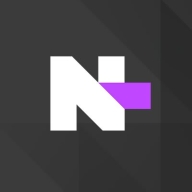

Trend Vision One Endpoint Security and N-able EDR compete in the endpoint security sector. Trend Vision One stands out in pricing and support, while N-able EDR has superior features.
Features: Trend Vision One Endpoint Security is praised for robust threat detection, comprehensive reporting, and integration capabilities. User reviews for N-able EDR highlight its advanced threat hunting, automated remediation, and detailed security insights.
Room for Improvement: Trend Vision One Endpoint Security faces criticism for occasional performance slowdowns and complex configuration. Users suggest simplifying settings and improving efficiency. N-able EDR receives feedback regarding its steep learning curve and the need for more intuitive navigation.
Ease of Deployment and Customer Service: Trend Vision One Endpoint Security is noted for its straightforward deployment but mixed reviews for customer support responsiveness. N-able EDR deployment is seen as more challenging but is supported by highly responsive customer service.
Pricing and ROI: Trend Vision One Endpoint Security users value its cost-effectiveness and quick ROI, citing reasonable setup costs. N-able EDR is seen as higher-priced but justified by its extensive features, with users acknowledging a higher ROI over time.


N-able EDR provides comprehensive endpoint detection and response capabilities, ensuring system security and facilitating rapid incident response. Users highlight its effectiveness in detecting threats and appreciate its detailed reporting and seamless integration with existing IT infrastructure.
N-able EDR stands out with its robust threat detection, efficient endpoint protection, and comprehensive incident reporting. It offers constant monitoring and protection against malware and other cyber threats. Users find the configuration easy and appreciate the detailed alerts and analysis. With real-time monitoring and automated threat response, N-able EDR allows for high customization, contributing to enhanced security management. However, users suggest improvements in customization, reporting capabilities, scalability, and faster response times.
What are the standout features of N-able EDR?N-able EDR is widely implemented across industries such as finance, healthcare, and retail. In finance, it's crucial for protecting sensitive data and ensuring compliance. Healthcare entities utilize it for safeguarding patient information against breaches. Retailers rely on its robust protection to secure transactional data from cyber threats.
Trend Vision One Endpoint Security delivers comprehensive antivirus, data protection, and device management. It offers robust threat detection and is deployable on-premises or via the cloud, making it versatile for endpoint security across organizations.
Emphasizing reliable endpoint security, Trend Vision One guards workstations and servers with extended detection and response features. Its machine learning-driven threat detection offers protection from malware and viruses, including zero-day threats. With seamless updates and automation, it minimizes administrative burdens, making deployment efficient. Criticisms include high resource use during scans and integration complexities, with calls for improved data loss prevention and better encryption. Users see the need for enhanced Linux support and quicker security updates.
What features define Trend Vision One Endpoint Security?In the finance sector, Trend Vision One is implemented for robust data protection and regulatory compliance. Healthcare providers rely on it for protecting sensitive patient information from cyber threats. Retailers use it for safeguarding payment systems and customer data against breaches, ensuring uninterrupted business operations.
We monitor all Endpoint Detection and Response (EDR) reviews to prevent fraudulent reviews and keep review quality high. We do not post reviews by company employees or direct competitors. We validate each review for authenticity via cross-reference with LinkedIn, and personal follow-up with the reviewer when necessary.